


Aesop's Fables is a collection of fables written by ancient Greek slave and storyteller, Aesop, in the 5th century BCE. Aesop and his fables are known to us due to their mentioning by ancient Greek philosophers and historians, such as Herodotus. Tales credited to Aesop have been gathered across the centuries in a variety of languages, such as Greek and Latin.
An observer of animals and people, Aesop's Fables include talking animals and plants with human characteristics. Aesop's Fables have a strong moral message at the core. His stories have been taught to children to educate them in ethical and moral behaviour.
Aesop was an Ancient Greek fabulist and storyteller, famous for writing a collection of fables known as Aesop’s Fables.
It’s difficult to pull together information about Aesop’s biography and facts about him. His life is a bit of an enigma, and there isn’t enough concrete evidence to suggest he was even a real person! Some believe his name may have just been used by another writer. Despite this mystery, there is mention of Aesop throughout Greece history, which has allowed historians to build a somewhat fragmented biography.
It's believed Aesop lived between 620 and 560 BC, but there are disputing records about where he came from.
While we don’t have a full picture of Aesop’s life, historians have managed to discover some facts about him:
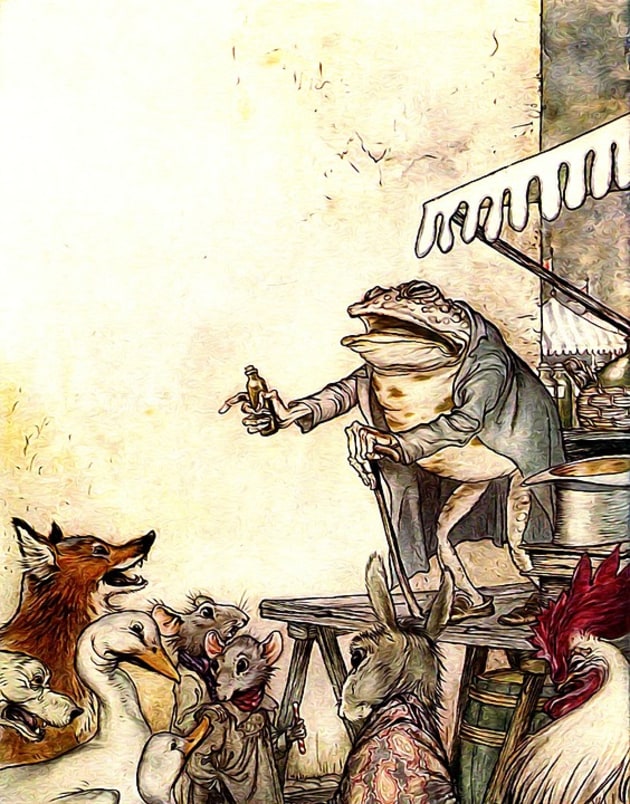
Fables are stories that feature animals, plants, legendary creatures, inanimate objects or forces of nature that are anthropomorphised (given human qualities). Fables always have an underlying moral lesson that's learned through reading the story. The importance of fables is not the story itself, but the moral learned.
Fables are told to children all around the world. Their simple themes make them easy to understand and help teach valuable life lessons.
Here is a list of Aesop's Fables:
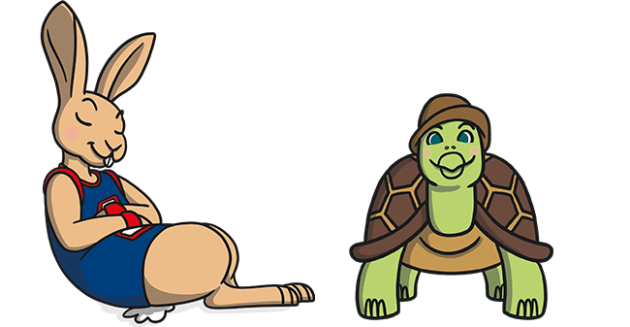
Many of Aesop’s Fables have sparked popular sayings that are used today. Some of these include:
Every single one of Aesop's Fables has a moral that we can learn something from. Here, we'll go over some of the most famous fables and their morals.
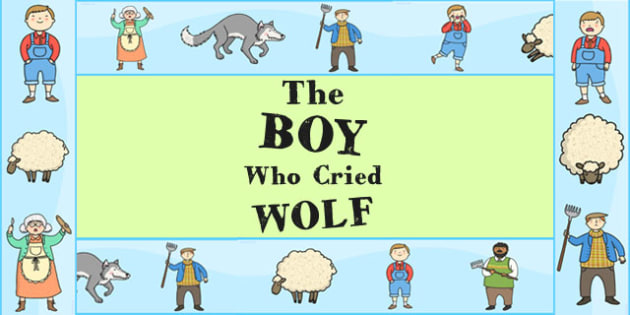
One of the most famous of Aesop's Fables, 'The Boy Who Cried Wolf', highlights the importance of always being truthful.
There once was a shepherd boy who was bored as he sat on the hillside watching the village sheep. To amuse himself, he took a great breath and sang out, "Wolf! Wolf! The Wolf is chasing the sheep!"
The villagers came running up the hill to help the boy drive the wolf away. But when they arrived at the top of the hill, they found no wolf. The boy laughed at the sight of their angry faces.
"Don't cry 'wolf', shepherd boy," said the villagers, "when there's no wolf!" They went grumbling back down the hill.
Later, the boy sang out again, "Wolf! Wolf! The wolf is chasing the sheep!" To his naughty delight, he watched the villagers run up the hill to help him drive the wolf away.
When the villagers saw no wolf, they sternly said, "Save your frightened song for when there is really something wrong! Don't cry 'wolf' when there is NO wolf!"
But the boy just grinned and watched them go grumbling down the hill once more.
Later, he saw a REAL wolf prowling about his flock. Alarmed, he leapt to his feet and sang out as loudly as he could, "Wolf! Wolf!"
But the villagers thought he was trying to fool them again, and so they didn't come.
At sunset, everyone wondered why the shepherd boy hadn't returned to the village with their sheep. They went up the hill to find the boy. They found him weeping.
"There really was a wolf here! The flock has scattered! I cried out, "Wolf!" Why didn't you come?"
An old man tried to comfort the boy as they walked back to the village.
"We'll help you look for the lost sheep in the morning," he said, putting his arm around the youth, "Nobody believes a liar...even when he is telling the truth!"
Take a look at our collection of The Boy Who Cried Wolf story teaching resources, featuring a range of engaging tools to use when teaching your children about the importance of truthfulness and honesty.
Are you looking for more ways to integrate the Cry Wolf Story into your lessons?
But, of course, it's important not to forget the message behind the Cry Wolf story and one of Aesop's Fables most famous morals. Truthfulness, honesty and lying can be tricky concepts for children to understand. We have a range of resources you can use to have these difficult but essential discussions.
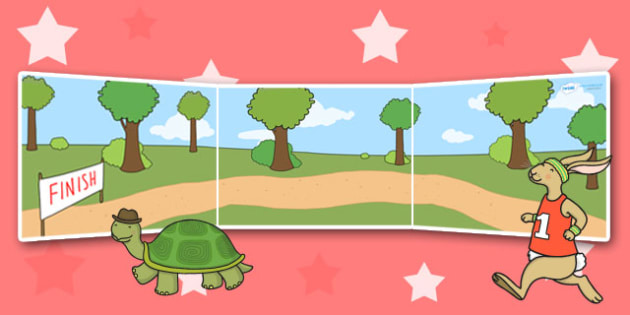
Another of Aesop's most famous fables, 'The Tortoise and The Hare', tells the story of a race between a tortoise and a hare. The moral of the story is that slow and steady wins the race.
There once was a speedy hare who bragged about how fast he could run. Tired of hearing him boast, Slow and Steady, the tortoise, challenged him to a race. All the animals in the forest gathered to watch.
Hare ran down the road for a while and then paused to rest. He looked back at Slow and Steady and cried out, "How do you expect to win this race when you are walking along at your slow, slow pace?"
Hare stretched himself out alongside the road and fell asleep, thinking, "There is plenty of time to relax."
Slow and Steady walked and walked. He never, ever stopped until he came to the finish line.
The animals who were watching cheered so loudly for Tortoise, they woke up Hare.
Hare stretched and yawned and began to run again, but it was too late. Tortoise was over the line.
After that, Hare always reminded himself, "Don't brag about your lightning pace, for Slow and Steady won the race!"
Our collection of The Tortoise and the Hare resources are a great help when teaching your children about Aesop's Fables.
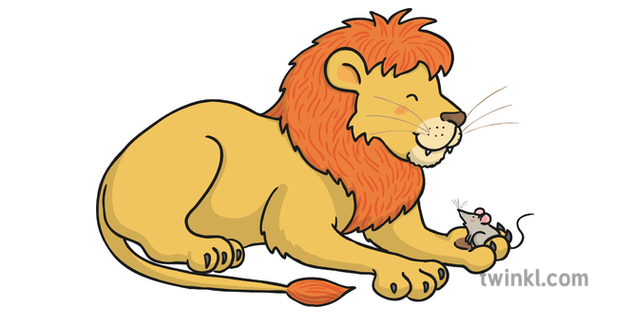
'The Lion and The Mouse' tells the story of a mouse, who's showed mercy by a lion, and returns this same kindness. The moral of the story is kindness, that mercy always has a reward and that regardless of size, one is always able to demonstrate kindness and helpfulness to another.
A small mouse crept up to a sleeping lion. The mouse admired the lion's ears, his long whiskers and his great mane.
"Since he's sleeping," thought the mouse, "he'll never suspect I'm here!"
With that, the little mouse climbed up onto the lion's tail, ran across its back, slid down its leg and jumped off of its paw. The lion awoke and quickly caught the mouse between its claws.
"Please," said the mouse, "let me go and I'll come back and help you someday."
The lion laughed, "You are so small! How could you ever help me?"
The lion laughed so hard he had to hold his belly! The mouse jumped to freedom and ran until she was far, far away.
The next day, two hunters came to the jungle. They went to the lion's lair. They set a huge rope snare. When the lion came home that night, he stepped into the trap.
He roared! He wept! But he couldn't pull himself free.
The mouse heard the lion's pitiful roar and came back to help him.
The mouse eyed the trap and noticed the one thick rope that held it together. She began nibbling and nibbling until the rope broke. The lion was able to shake off the other ropes that held him tight. He stood up free again!
The lion turned to the mouse and said, "Dear friend, I was foolish to ridicule you for being small. You helped me by saving my life after all!"
Browse through this collection of The Lion and The Mouse resources and find the resources best suited to you and your children.

The moral of The Fox and The Crow is to not believe everything you hear -an important message for young children.
There once was a big black crow sitting high up in the trees. In his beak, he had a nice, round cheese.
Along came a fox, as clever as they come, "Mmmm," he thought. "I'd like to have a bite of that cheese. It will be easy to get some...."
"Oh Crow," called fox, "if your voice is half as beautiful as those fine feathers I see, it would please my ears to hear you sing a little melody!"
Well, Crow had never heard anyone say such a complimentary thing. So, he opened up his beak and he began to squawk and sing.
Down fell the cheese into the waiting mouth of the fox below.
"Oh no!" squawked the crow, "you've stolen my dinner!"
"Not at all!" said the fox, licking his lips. "It was a fair enough trade! Vain crow, with your head up in the trees! You got the compliments, and I got the cheese!"
Our collection of The Fox and The Crow resources should be a great help when telling your children this story.
Not sure which Aesop's Fable to read with your class or your child? Here's a quick run-down of some of Aesop's most famous fables and the morals that children can learn from them.
Children are likely to be introduced to fables in KS1 through to KS2.
They may start by exploring a range of fables to grow their understanding of the genre. They then might move onto activities such as writing a diary entry as one of the characters in a fable or writing their own fable. Both of these are activities are useful for checking their understanding of the typical convention of a fable (animals with human qualities, a conflict, a moral to be learnt etc.)